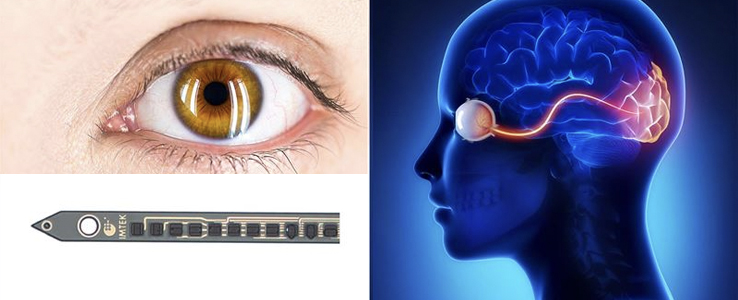The possibility of using electrical implants to restore sight to blind or visually impaired people is an unusual idea but not entirely new. Geordi La Forge's mask in Star Trek may not be as sci-fi as one might think. By stimulating the visual center in the brain with electrical impulses, visual impressions can be evoked, even though the eye has lost the ability to see.
As I said, it is not a new concept, bionic retinal implants and brain implants have been explored since the 1990s, but until now there is no effective and sustainable enough solution. The problem so far is that the relatively large silicone-based implants available today cause scarring in the brain and wear down over time.
But now a research group at Chalmers University, the University of Freiburg and the Netherlands Institute for Neuroscience have developed a tiny implant in a new, non-corrosive material.
– We have succeeded in making electrodes as small as neurons, which transmit current but do not wear out over time, says Maria Asplund, professor of bioelectronics at Chalmers University and head of research in the technical part of the project, in a press release.
Even when the eye loses the ability to see, the visual center in the brain often remains intact and waits for signals. Electrovision implants use electrical pulses to stimulate parts of the brain where information from the healthy eye is processed, sorted by color, shape and movement and transformed into visual impressions. The more electrodes an implant uses, the clearer the visual impression becomes for the blind person, who can thus partially experience the image of their surroundings.
-Imagine a digital information sign you can see along the highway. In order to understand the message, enough pixels must be illuminated. In the case of a blind person, all the “pixels” are broken and he needs at least a thousand electrodes to be able to activate enough pixels to create an understandable image, explains Maria Asplund in the press release.
The researchers' electrodes measure just 15 x 15 micrometers — smaller than a cell — and are attached to the visual center of the brain on an implanted wire as thin as a split hair. The new electrodes consist of special metal oxides combined with a conductive polymer, a plastic-like, flexible material that conducts current but at the same time is very stable over time in the body. The combination of polymer and special metal oxides is described as unique and is expected to pave the way for effective aids that will last for many years.
– Making very small electrodes last a long time in the body has not been possible before. But here conductive polymer comes in as a solution. In the long term, this means that electric vision implants will have a much longer lifespan, thus becoming a better and more sustainable solution for blind people, says Maria Asplund.
The method was tested by researchers at the Dutch Neuroscience Institute in the Netherlands, where mice were trained to respond to an electrical pulse sent to the visual center in the brain. The study showed that in just a few sessions, the mice were able to learn to respond to electrical stimulation from the electrodes. In addition, the study showed that the current threshold when the mice perceived the stimulus was lower than that of conventional metal-based implants. The research team was also able to show that the function of the implant remained stable over time.

“Extreme tv maven. Beer fanatic. Friendly bacon fan. Communicator. Wannabe travel expert.”







More Stories
Why Rare Earth Metals for Electric Cars Are Crucial for Modern Mobility
“We want to promote critical rules approach”
“A lot happened during the trip,” Jönköping County Council